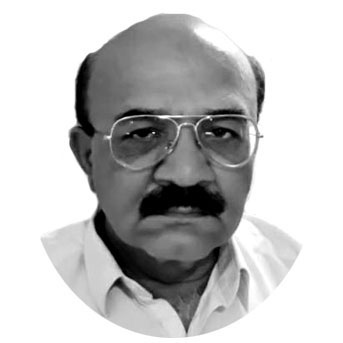Journey of PPP — 1967-2021
THE Pakistan People’s Party was launched at its founding convention, held in Lahore on 30 November 1967.
In the same meeting, Zulfikar Ali Bhutto was elected as chairman. Since its formation in 1967, the PPP has been voted in power on five separate occasions 1970, 1977, 1988, 1993 and 2008. It dominated the politics of Pakistan during the 1970s.
Among the expressed goals of the party were the establishment of egalitarian democracy and the application of socialistic ideas to realize economic and social justice.
After Tashkent Declaration, the confrontation between Ayub Khan and Foreign Minister Zulfikar Ali Bhutto led to the resignation of the latter. In 1968, a massive public-relations programme was launched by the party, beginning in Punjab. Bhutto’s programme directly targeted the country’s poverty-stricken masses.
The left-wing-oriented slogan, “Land to the Landless,” proved to be irresistible to the peasants and labour force, as the party promised not only to abolish the fundamental feudalism that had plagued the country but also to redistribute lands amongst the landless and the peasants.
The working class and labour movement quickly flocked to the party, believing it to be a party dedicated to the destruction of capitalism in the country.
Young university students and teachers, who had often borne the brunt of Ayub Khan’s dictatorial regime during his decade-long rule, we’re promised a better future with better educational and career opportunities.
The party’s manifesto also attracted the country’s numerous sectarian minorities, who quickly joined the party.
The continuous contentions and pressure forced Khan to resign from the presidency in 1969, leading to the imposition of Martial Law by Army Commander General Yahya Khan after promising to hold elections in two years.
During this time, the PPP intensified its support in West Pakistan, organizing itself and gaining support from poor masses in West Pakistan. As a result of Pakistan’s defeat by India in the Indo-Pakistan War of 1971, General Yahya Khan was forced to resign.
On 20 December, Z A Bhutto took the oath as President. By the time Bhutto had assumed control of what remained of Pakistan, the nation was completely isolated, angered and demoralized.
Bhutto vowed to build a new Pakistan and promised to fight back. On 02 January 1972, Bhutto announced the nationalization of all major industries. He successfully negotiated the return of 93,000 prisoners of war and a settlement with India.
The National Assembly approved the Constitution of Pakistan of 1973 on April 10, 1973, and it came into effect on 14 August 1973, the same day Mr Bhutto took oath as the Prime Minister of Pakistan.
In 1977, a general election was held in which PPP secured a majority. However, the PNA-led opposition started demonstrations at perceived rigging in elections.
At the peak of the movement, Bhutto offered to hold elections in November 1977 and ministries to PNA.
Tension, however, continued to mount. Despite an agreement reached between the opposition and PPP, martial law was imposed in the country by the then Chief of Army Staff, General Zia-ul-Huq.
On 04 April 1979, after a controversial trial found him guilty of murdering a political opponent, Bhutto was executed by hanging. In 1982, Mohtarmma Benazir Bhutto was elected as the Party Chairperson.
The PPP started the Movement for Restoration of Democracy, which was one of the greatest democratic movements in the world against the ruthless dictatorship of General Zia-ul-Haq.
After 12 long years, the PPP returned to power by winning the general election in 1988 with Mohtarma Benazir Bhutto becoming the first female Prime Minister of a Muslim country.
In 1990, the PPP government was dismissed. It later returned to power in the general election in 1993 with Bhuttoism becoming the most influential and powerful.
PPP’s next government was dismissed by the party’s elected President, Farooq Leghari, in September 1996.
After the assassination of Benazir Bhutto on 27 December 2007, the 2008 parliamentary elections were held on 18 February. The PPP won a considerable victory among all political parties.
On 28 March 2008, the party-appointed Yousaf Raza Gillani to the Office of the Prime Minister. Later on, Asif Ali Zardari was elected as the President of Pakistan. He surrendered all powers for the cause of democracy through the 18th Amendment.
Though PPP lost major province Punjab in the 2013 and 2018 elections, it still has a basic organization in every corner of the country. The PPP’s leadership and workers must look retrospectively into what they need to do to further strengthen the party in the whole of Pakistan.
It must be in a position where Shaheed Z A Bhutto and Shaheed Benazir Bhutto made the party powerful. There remains a perception that a strong political future awaits the PPP. Bhutto had laid the foundation of true democracy, for which he had to pay a very heavy price.
This year Party is celebrating Foundation Day at Peshawar, KP that is a symbol of the federation. PPP must be kept near, if we ignore it, the political future of the country will not get any better.
— The writer is retired officer of Sindh Govt.









